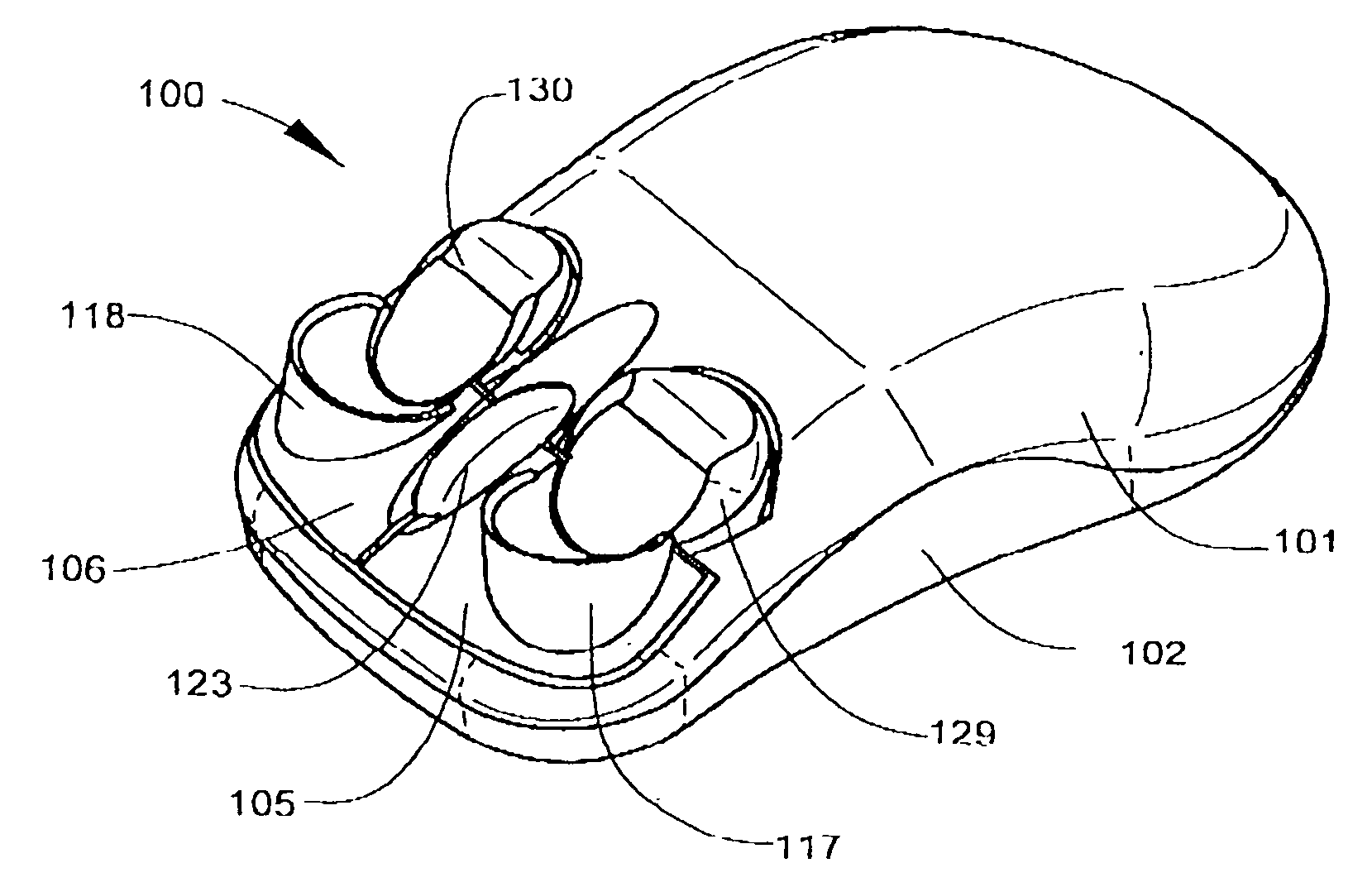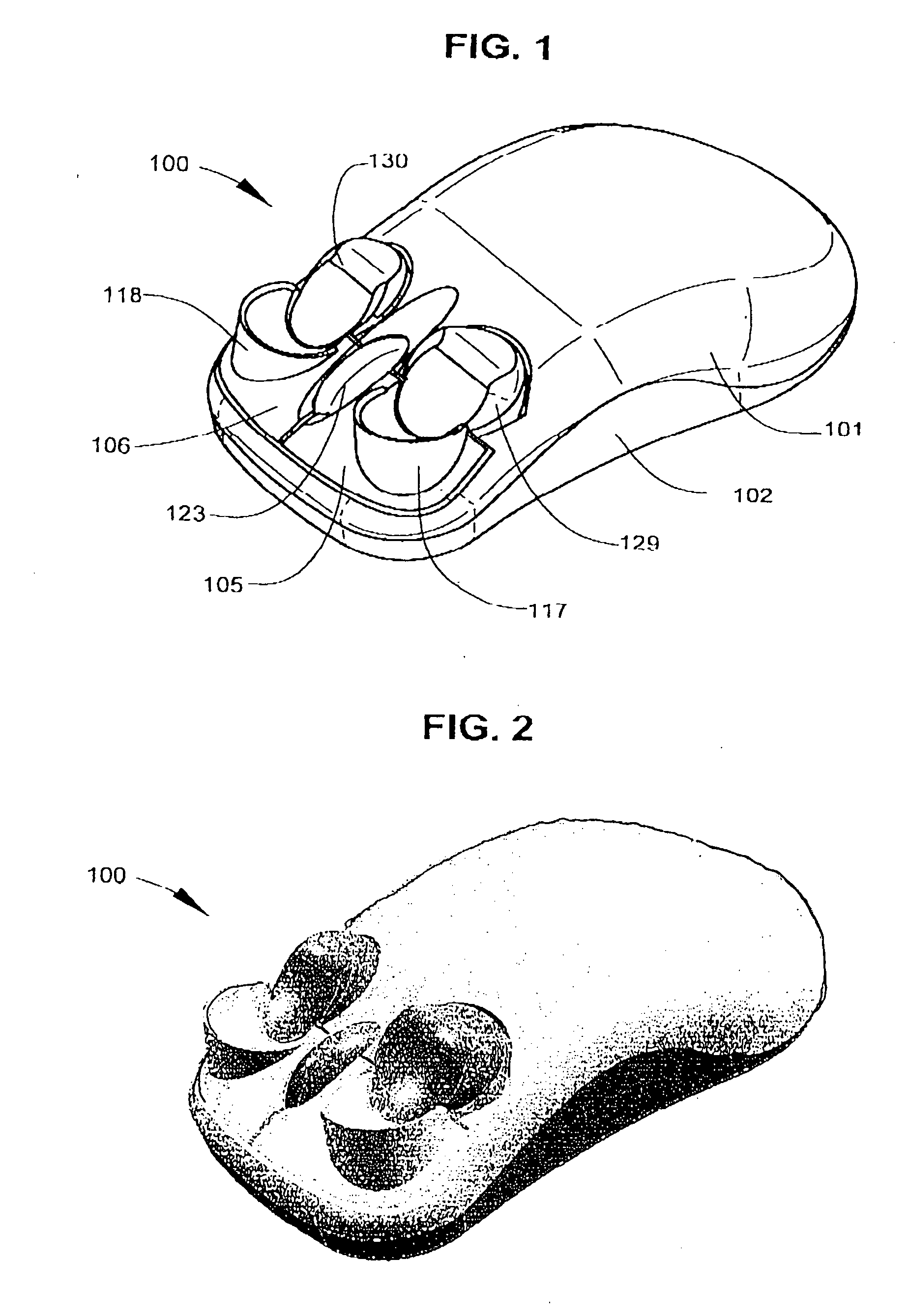Computer input device with ergonomically formed and positioned actuators
a technology of ergonomically formed and positioned actuators, applied in the field of mouse input devices, can solve the problems of limited mouse movement, carpal tunnel syndrome, and inability to give the user much more accuracy and control, and achieve the effect of enhancing the positional control of cursor placement and relieving discomfor
- Summary
- Abstract
- Description
- Claims
- Application Information
AI Technical Summary
Benefits of technology
Problems solved by technology
Method used
Image
Examples
Embodiment Construction
[0032] In order to understand more fully the present invention, it is helpful to define the art and sequences of the user's fingers-, wrist-, and arm-motions, and an optimal posture of the user's hand and fingers on the working surface when operating a mouse. It can be readily determined that with the low palm, fingertips, and the side of the distal phalanx of the thumb resting on the working surface without grasping anything, the fingers are not contracted at all, but are naturally curled in the relaxed, rest-position; what is more, the index fingertip seems to be slightly elevated in this position.
[0033] The user's ability to coordinate the fingers motions and the functional agility of the human fingers, as well as the rational combination of the fingers, wrist, and arm motions in operating a mouse are the decisive criteria chosen for the embodiments of the present invention.
[0034] It is an object of this invention to provide a form of the mouse, which is shaped to fit within th...
PUM
 Login to View More
Login to View More Abstract
Description
Claims
Application Information
 Login to View More
Login to View More - R&D
- Intellectual Property
- Life Sciences
- Materials
- Tech Scout
- Unparalleled Data Quality
- Higher Quality Content
- 60% Fewer Hallucinations
Browse by: Latest US Patents, China's latest patents, Technical Efficacy Thesaurus, Application Domain, Technology Topic, Popular Technical Reports.
© 2025 PatSnap. All rights reserved.Legal|Privacy policy|Modern Slavery Act Transparency Statement|Sitemap|About US| Contact US: help@patsnap.com



